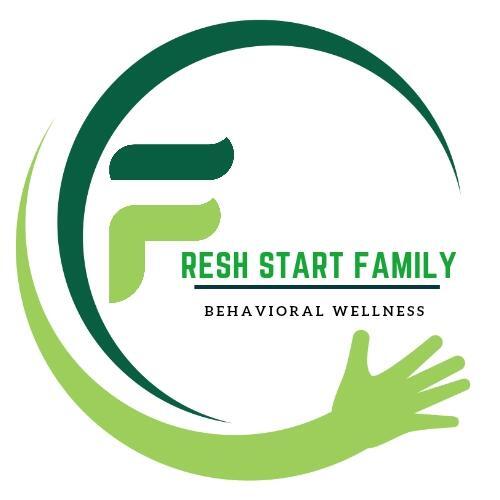Thoughts of Self Harm can be frightening, isolating, and deeply painful. They often arise when emotional pain becomes overwhelming or when someone is struggling to cope in healthy ways. If you’re reading this because you’re experiencing Thoughts of Self Harm—or know someone who is—you are not alone. These feelings are more common than most people realize, and help is available.
Thoughts of Self Harm, whether or not they involve suicidal intent, are often a way to express or manage unbearable emotions. They can be linked to trauma, depression, or other mental health challenges. No matter the cause, these thoughts are never something to ignore or dismiss. They are a signal that something deeper is going on and should be met with empathy and support—not judgment. In this guide, we’ll explore why these thoughts happen, how to recognize them, and most importantly, what steps you can take toward healing.
Understanding the Root of Thoughts of Self Harm

Self-harm thoughts can include any desire to hurt oneself physically—ranging from minor injuries to more severe acts. These thoughts might come in waves or linger constantly, and they can affect anyone, regardless of age, gender, or background.
What Causes These Thoughts?
Several factors can contribute to thoughts of self-harm, and they often overlap or build on each other. These influences can intensify emotional distress, making it difficult to cope in healthy ways.
- Mental health: Conditions like depression, anxiety, and borderline personality disorder can impair emotional regulation and lead to harmful coping mechanisms.
- History of trauma or abuse: Past experiences of physical, emotional, or sexual abuse can cause lasting psychological damage that manifests as self-harming thoughts.
- Feeling emotionally numb or overwhelmed: Some individuals harm themselves to feel something when emotionally numb or to release intense emotional buildup.
- Difficulty expressing emotions: When someone cannot articulate or manage their feelings, they may turn to physical actions like self-harm as an outlet.
- Loneliness or isolation: Prolonged social disconnection can lead to feelings of emptiness and worthlessness that increase the risk of self-harm thoughts.
- Perfectionism, guilt, or self-criticism: Harsh self-judgment and unrealistic expectations can foster shame and self-punishment behaviors, including self-harm.
Suicide risk
It’s important to understand that self-harm is not always a suicidal gesture. Many people who self-harm do not want to end their lives but instead seek relief from psychological pain. That said, having thoughts of harming oneself does increase the risk of suicidal behavior, and should always be taken seriously.
Common Myths Debunked
Myth: “They’re just doing it for attention.”
Reality: Most people hide their self-harm. It’s a cry for connection, not attention.
Myth: “It’s only a teenage problem.”
Reality: People of all ages, including adults and seniors, may experience these thoughts.
Myth: “If someone talks about it, they won’t actually do it.”
Reality: Talking about self-harm is often a way to ask for help. Listen.
Signs to Watch For – In Yourself or Others

Recognizing early signs can make a crucial difference in getting help and preventing harm. Paying close attention to behavioral, emotional, and physical changes can open the door to timely support and intervention.
Emotional Signs:
- Persistent sadness or mood swings
- Hopelessness or emptiness
- Anger or irritability
Behavioral Signs:
- Withdrawing from social activities
- Avoiding situations that involve showing skin (e.g., swimming)
- Risk-taking behaviors or substance use
Physical Signs:
- Unexplained cuts, bruises, burns, or scars
- Wearing long sleeves or pants even in hot weather
- Frequent “accidents” or excuses for injuries
What to Do if You’re Having These Thoughts

You may feel overwhelmed, but you are not powerless. There are immediate and longer-term steps you can take.
1. Prioritize Safety
- Remove access to items you might use to hurt yourself.
- Ask a trusted person to stay with you or be available by phone.
- Use grounding techniques: deep breathing, touching a cold object, describing your surroundings out loud.
2. Make a Safety Plan
A safety plan is a written list of coping strategies and support contacts. Here’s a simple version:
- Warning signs: “When I feel overwhelmed or numb…”
- Coping strategies: “I will take a walk, call my friend, listen to music…”
- People to contact: “Mom, Therapist, Crisis Line (988)…”
- Safe spaces: “Bedroom with calming music, public library, friend’s house…”
3. Reach Out for Help
You don’t have to go through this alone. Talk to a friend, family member, therapist, or primary care doctor. The Crisis Text Line (text HOME to 741741) or 988 Suicide & Crisis Lifeline are available 24/7.
How to Help Someone Who’s Struggling

Supporting a loved one having a thoughts of self harm can be emotionally complex and overwhelming, especially if you’re unsure of what to say or do. Even so, showing up with empathy and consistency can make a life-saving difference in their recovery.
What to Do
When someone opens up about self-harm thoughts, the most important thing you can do is listen and respond with compassion—not judgment.
- Listen without judgment: Let them speak freely without trying to “fix” the situation right away. Avoid interrupting or questioning their feelings, and instead focus on hearing their story with empathy and patience. Sometimes just feeling heard is the first step toward healing.
- Validate their feelings (“That sounds really painful. I’m glad you told me.”): Acknowledging their pain lets them know they’re not wrong for feeling the way they do. Phrases like “I’m here for you” or “That must be incredibly hard” help the person feel supported rather than dismissed. Validation builds trust and opens the door to ongoing dialogue.
- Offer help in finding professional care: You can assist by researching therapists, helping them make an appointment, or offering to go with them to the first session. Make sure to respect their pace—offer options, not ultimatums. Emphasize that seeking help is a strength, not a weakness.
- Stay calm and present—your energy influences theirs: It’s natural to feel alarmed, but reacting with panic can cause the person to shut down or feel more ashamed. Stay grounded, keep your tone gentle, and focus on being present in the moment. Your calmness can create a safe emotional space for them.
What Not to Do
Some reactions, even if well-intentioned, can be harmful or shut down the conversation altogether. Here are a few things to avoid:
- Don’t minimize (“It’s not that bad.”) Brushing off their pain can make them feel invalidated. Even if it seems minor to you, their feelings are real and deserve acknowledgment.
- Don’t guilt or shame (“How could you do this to us?”): Blaming them only deepens feelings of shame and isolation. It makes it harder for them to reach out again.
- Don’t ignore or avoid the topic: Avoiding the subject reinforces silence and stigma. Talking openly shows you care and builds trust.
Coping Strategies and Self-Help Tools

While professional support is vital, self-help tools also play a key role in healing and day-to-day emotional resilience. Developing healthy coping strategies can empower individuals to manage distress, reduce self-harm urges, and build long-term mental wellness.
1. Emotional Regulation
- Journaling for Mental Health: Write what you feel without censoring
- Mindfulness: Try apps like Headspace or Insight Timer
- Breathing Exercises: 4-7-8 breathing, box breathing
2. Creative Outlets
- Painting, drawing, music, or dance
- Writing poetry or short stories
- DIY crafts or building models
3. Physical Activities
- Running, yoga, or hiking
- Cold showers to reset the nervous system
- Holding ice or snapping rubber bands as a safer alternative
When Thoughts Return: Long-Term Management
Healing from self-harm thoughts is not always a straight path, and moments of struggle can resurface even after progress has been made.
Managing Recurrence
- Recognize your triggers early: Identify situations, people, or feelings that tend to bring back harmful thoughts, such as lack of sleep, conflict, or anniversaries of trauma. Keeping a journal or using a mood tracking app can help spot patterns before they escalate.
- Revisit and update your safety plan: Keep your safety plan accessible and revise it as your needs evolve. Add new coping strategies, support contacts, or affirmations that reflect your current stage of recovery.
- Reach out to your support network: Talk to a trusted friend, therapist, or support group as soon as troubling thoughts return. You don’t need to wait until things get “bad enough”—connection can help ease the burden before it intensifies.
- Stick to your wellness routine: Consistency with sleep, nutrition, movement, and mindfulness can create a solid foundation for emotional stability. Even small habits like walking for 10 minutes or drinking enough water can have a cumulative positive impact.
- Practice self-compassion: Be kind to yourself when setbacks happen—relapse is not failure, but part of healing. Use gentle inner dialogue and remind yourself of the progress you’ve already made and your capacity to get through difficult moments again.
Professional Treatment Options

When self-harm thoughts persist or intensify, professional treatment becomes an essential step toward healing. Trained mental health providers can offer a safe space, specialized care, and proven interventions to address the emotional and psychological roots of these thoughts.
How to Tell If You or Your Loved One May Need Professional Intervention
Knowing when to involve a mental health professional can be life-saving. Some warning signs indicate that individual coping methods are no longer enough and professional support is necessary.
- Thoughts of self-harm or suicide are becoming more frequent: If someone is preoccupied with harming themselves, has developed a plan, or feels unable to control the urge, immediate intervention is crucial.
- There is a history of self-injury or a previous suicide attempt: Past behavior is a strong indicator of future risk and warrants ongoing, structured care.
- Daily functioning is disrupted: Difficulty maintaining responsibilities at work, school, or home, or a noticeable drop in hygiene, sleep, or appetite—can signal a deeper mental health concern.
- Emotional states are extreme or persistent: Intense mood swings, feelings of numbness, persistent sadness, or emotional detachment may point to depression, anxiety, or trauma-related disorders.
- Support systems feel inadequate: If the person feels isolated, misunderstood, or overwhelmed, even with family or friends around, it’s time to involve a professional who can provide clinical guidance.
Professional Treatment Mental Health Professionals May Include or Suggest

Once involved, mental health professionals will tailor treatment based on the individual’s needs, severity of symptoms, and personal goals. Treatment may include a combination of the following options:
- Individual Therapy (Talk Therapy): Therapists use structured approaches like Cognitive Behavioral Therapy (CBT) to help individuals recognize and challenge harmful thought patterns. Dialectical Behavior Therapy (DBT) is especially effective for managing intense emotions and reducing self-harm behaviors.
- Medication Management: For individuals with depression, anxiety, or mood disorders, psychiatrists or primary care doctors may prescribe antidepressants, mood stabilizers, or anti-anxiety medication to help regulate mood and thought patterns.
- Group Therapy: This format offers connection and shared experiences, reducing feelings of isolation. Group sessions often focus on emotion regulation, interpersonal skills, or coping strategies.
- Family Therapy: When appropriate, family therapy can help loved ones better understand the situation and learn healthier ways to communicate and support recovery.
Words of Hope
If you or someone you love is struggling with thoughts of self-harm, please remember: you are not broken, and you are not alone. These thoughts do not define your worth or your future. There is help. There is healing. And there is hope. Millions of people have overcome self-harm thoughts and gone on to live meaningful, joyful lives. With the right support and tools, you can, too. Reach out. Speak up. The first step is the hardest, but you don’t have to take it alone.
When everything feels heavy and nothing seems to go your way, seeking professional support is not a sign of weakness—it’s a courageous and vital step toward healing. A trained professional can help uncover the underlying causes of self-harming thoughts, provide tools for emotional regulation, and guide you through the recovery process with empathy and expertise. A Fresh Start Behavioral Health Services is more than a treatment center—it’s a safe space, a home away from home where you are met with compassion, understanding, and personalized care. Contact us today to learn how we can help you or a loved one move forward with hope and strength.

